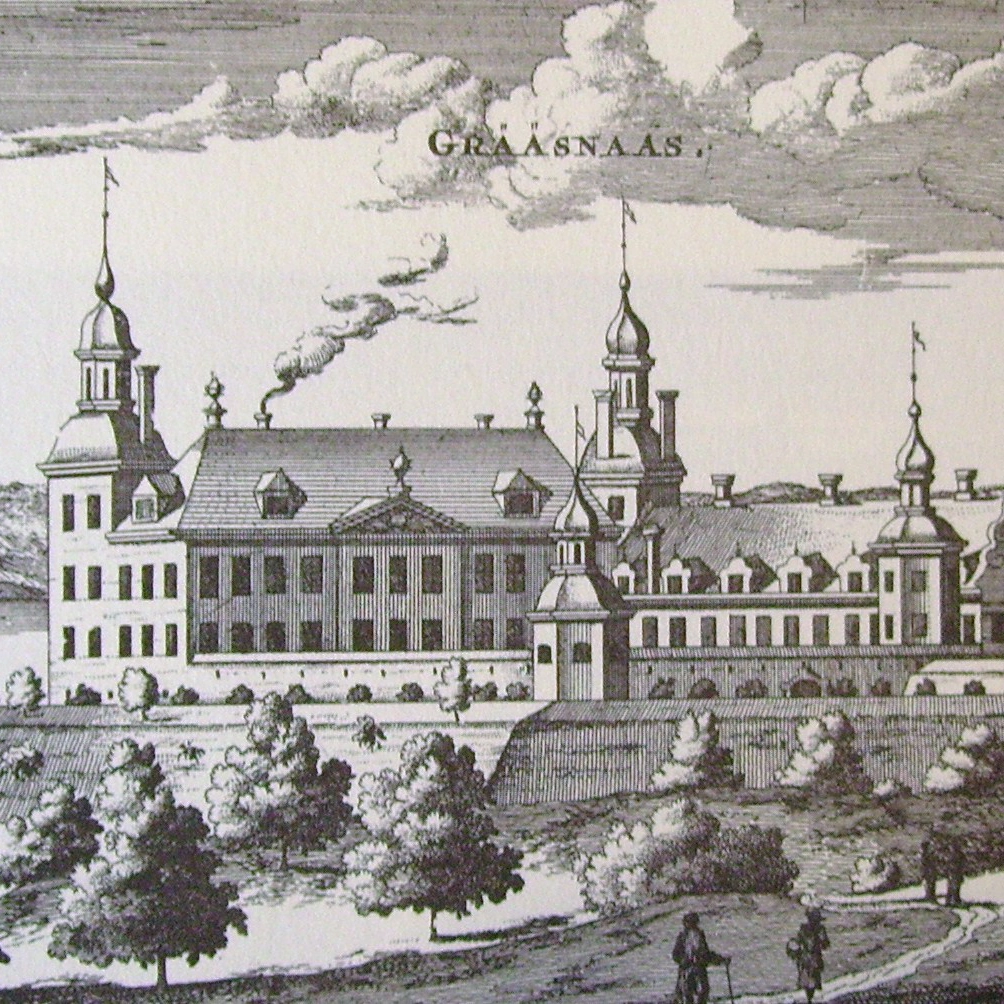


When Margareta’s father, Erik Abrahamsson Leijonhufvud, is executed during the Stockholm Bloodbath of 1520, the inheritance passes to his son Sten.
With his father gone and the kingdom in upheaval, Sten seeks to secure his position – not out on an island in the lake, but on solid ground.
In a letter from 1551, he refers to himself for the last time as “Lord of Loholm.”
Shortly thereafter begins one of the most ambitious castle relocations in Swedish history:
the fortress on the island is dismantled, and Gräfsnäs Castle begins to take shape on land.
But Sten would never see the castle completed.
He dies in 1568, gravely wounded during the power struggle against King Erik XIV.
The construction is carried forward by his widow, Ebba Månsdotter Lilliehöök –
a powerful and influential woman who would rule Gräfsnäs with an iron hand for decades.
Moats are dug, fortifications built, and bricks are transported from a newly established brickyard on the opposite side of the lake.
The new castle becomes both more beautiful and more strategically important than its predecessor.
Gräfsnäs is located along one of the 16th century’s most vital trade routes – running from Lödöse through Skepplanda and the forests of Risveden.
Just 40 kilometers west lies Bohus Fortress – then in Danish-Norwegian hands.
Establishing a strong Swedish presence here is not just practical, but a deliberate strategy:
to assert power, control trade, and defend the realm.
Gräfsnäs gradually becomes a center of influence in Västergötland –
right at the crossroads of politics, commerce, and military strategy.
Engraving of Gräfsnäs, 16th century: From Suecia Antiqua et Hodierna, Swidde, Willem / Dahlbergh, Erik
Här kan du boka plats på Gräfsnäs Castle – A New Seat of Power!
Eventet startar den {je_event_startdatum_event:j M} kl {je_event_startar}
{je_event_popup-teext}